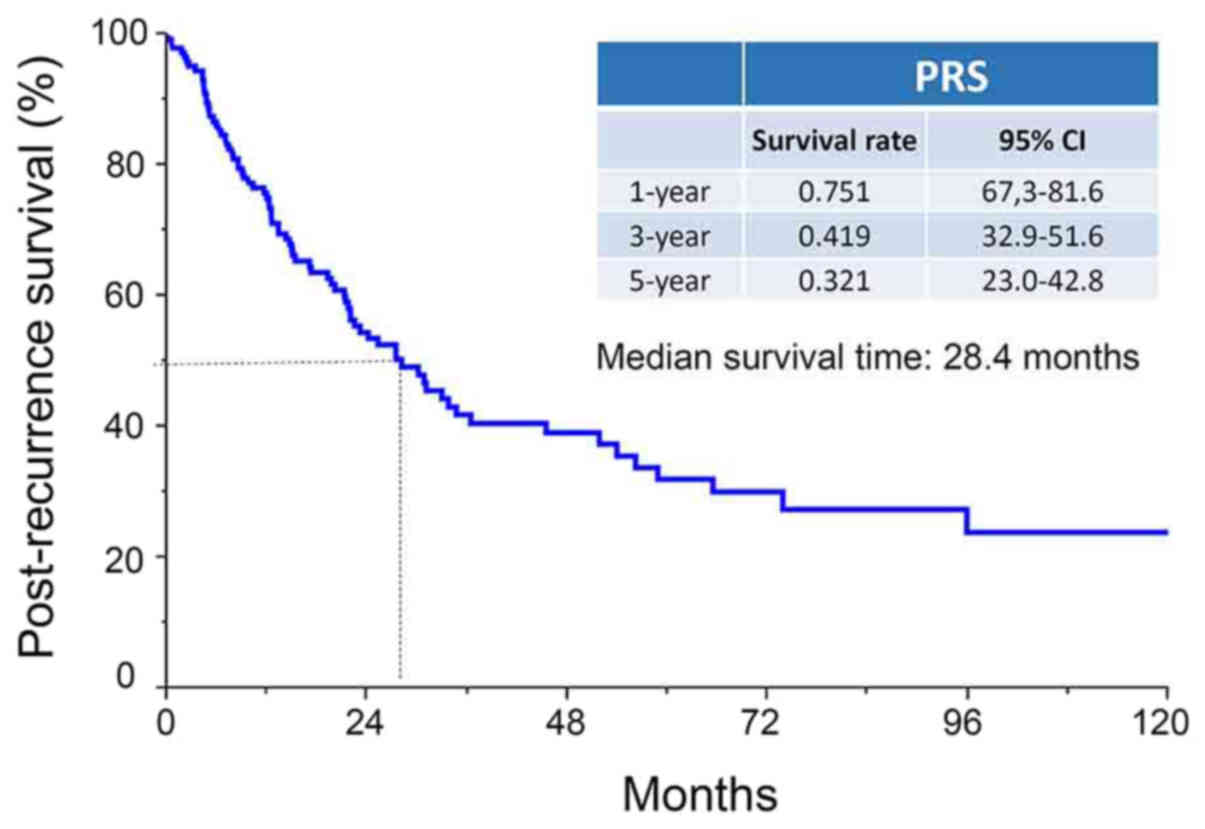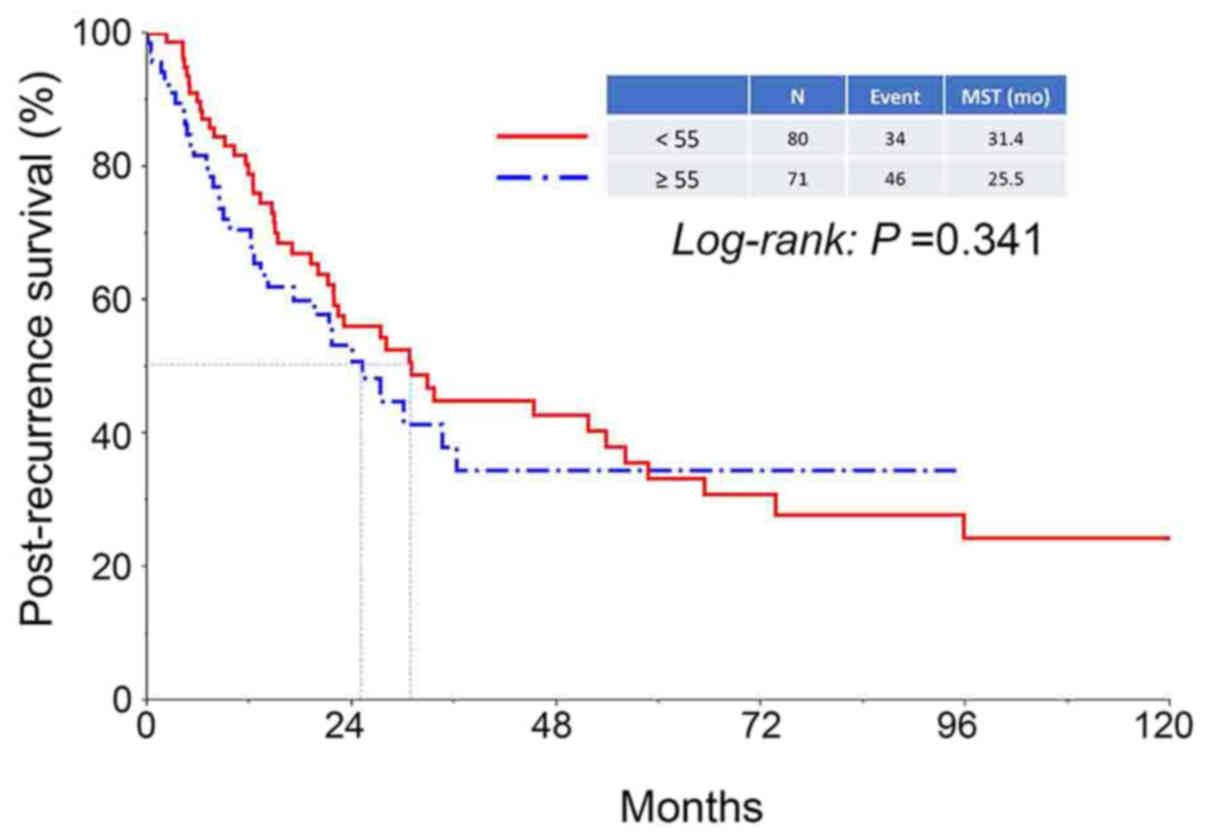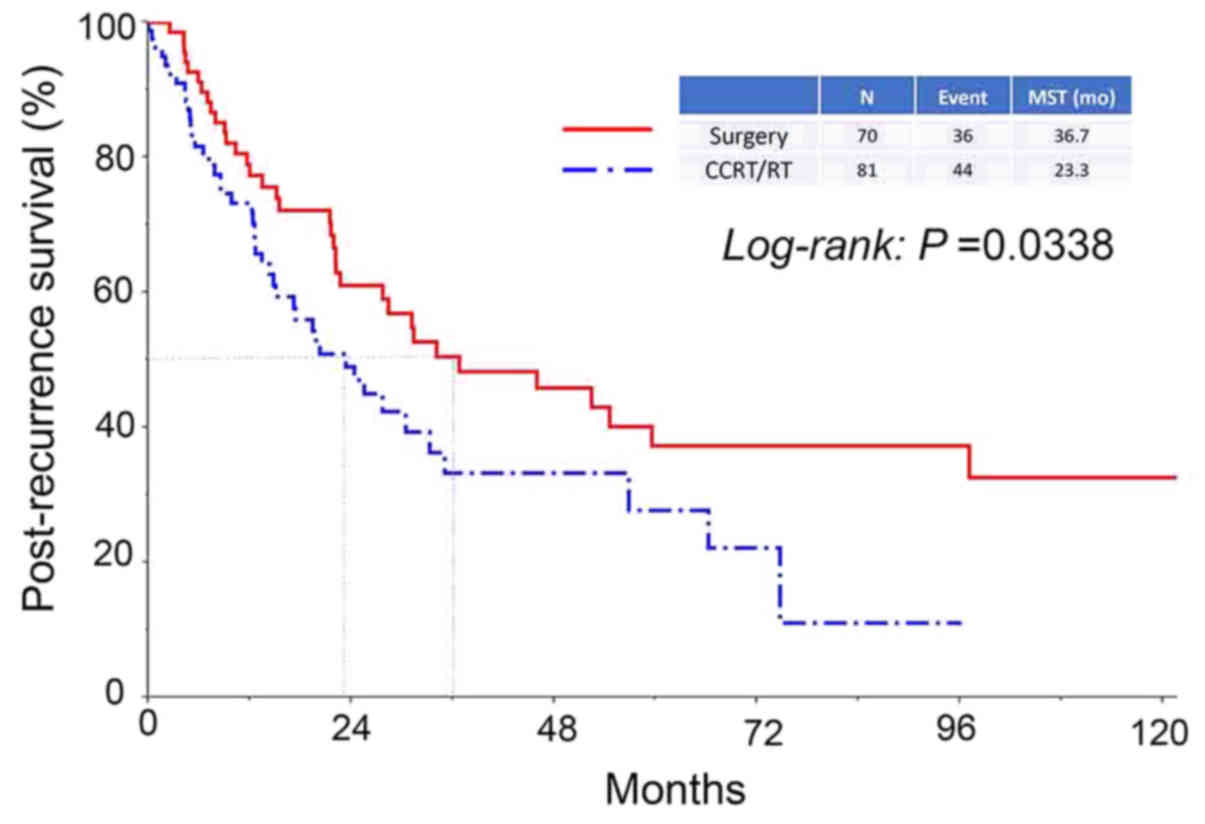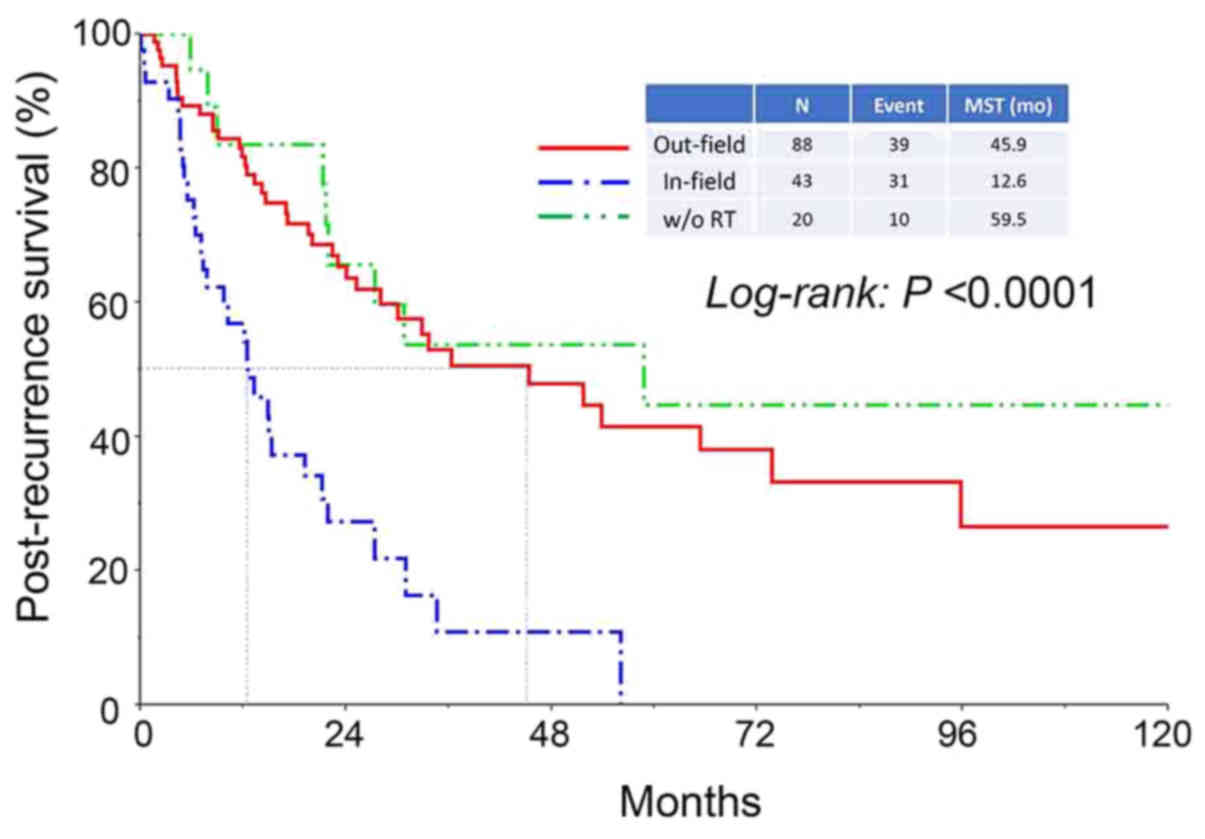|
1
|
Torre LA, Bray F, Siegel RL, Ferlay J,
Lortet-Tieulent J and Jemal A: Global Cancer Statistics, 2012. CA
Cancer J Clin. 65:87–108. 2015. View Article : Google Scholar : PubMed/NCBI
|
|
2
|
Allemani C, Weir HK, Carreira H, Harewood
R, Spika D, Wang XS, Bannon F, Ahn JV, Johnson CJ, Bonaventure A,
et al: Global surveillance of cancer survival 1995–2009: Analysis
of individual data for 25,676,887 patients from 279
population-based registries in 67 countries (CONCORD-2). Lancet.
385:977–1010. 2015. View Article : Google Scholar : PubMed/NCBI
|
|
3
|
Tokunaga H, Nakanishi T, Iwata T, Aoki D,
Saito T, Nagase S, Takahashi F, Yaegashi N and Watanabe Y: Effects
of chemotherapy on patients with recurrent cervical cancer
previously treated with concurrent chemoradiotherapy: A
retrospective multicenter survey in Japan. Int J Clin Oncol.
20:561–565. 2015. View Article : Google Scholar : PubMed/NCBI
|
|
4
|
Andikyan V, Khoury-Collado F, Sonoda Y,
Gerst SR, Alektiar KM, Sandhu JS, Bochner BH, Barakat RR, Boland PJ
and Chi DS: Extended pelvic resections for recurrent or persistent
uterine and cervical malignancies: An update on out of the box
surgery. Gynecol Oncol. 125:404–408. 2012. View Article : Google Scholar : PubMed/NCBI
|
|
5
|
Gadducci A, Tana R, Cosio S and Cionini L:
Treatment options in recurrent cervical cancer (Review). Oncol
Lett. 1:3–11. 2010. View Article : Google Scholar : PubMed/NCBI
|
|
6
|
Morris M, Eifel PJ, Lu J, Grigsby PW,
Levenback C, Stevens RE, Rotman M, Gershenson DM and Mutch DG:
Pelvic radiation with concurrent chemotherapy compared with pelvic
and para-aortic radiation for high-risk cervical cancer. N Engl J
Med. 340:1137–1143. 1999. View Article : Google Scholar : PubMed/NCBI
|
|
7
|
Green JA, Kirwan JM, Tierney JF, Symonds
P, Fresco L, Collingwood M and Williams CJ: Survival and recurrence
after concomitant chemotherapy and radiotherapy for cancer of the
uterine cervix: A systematic review and meta-analysis. Lancet.
358:781–786. 2001. View Article : Google Scholar : PubMed/NCBI
|
|
8
|
Legge F, Chiantera V, Macchia G, Fagotti
A, Fanfani F, Ercoli A, Gallotta V, Morganti AG, Valentini V,
Scambia G and Ferrandina G: Clinical outcome of recurrent locally
advanced cervical cancer (LACC) submitted to primary multimodality
therapies. Gynecol Oncol. 138:83–88. 2015. View Article : Google Scholar : PubMed/NCBI
|
|
9
|
Gadducci A, Sartori E, Maggino T, Zola P,
Cosio S, Zizioli V, Lapresa M, Piovano E and Landoni F:
Pathological response on surgical samples is an independent
prognostic variable for patients with Stage Ib2-IIb cervical cancer
treated with neoadjuvant chemotherapy and radical hysterectomy: An
Italian multicenter retrospective study (CTF Study). Gynecol Oncol.
131:640–644. 2013. View Article : Google Scholar : PubMed/NCBI
|
|
10
|
Singh AK, Grigsby PW, Rader JS, Mutch DG
and Powell MA: Cervix carcinoma, concurrent chemoradiotherapy, and
salvage of isolated paraaortic lymph node recurrence. Int J Radiat
Oncol Biol Phys. 61:450–455. 2005. View Article : Google Scholar : PubMed/NCBI
|
|
11
|
Rose PG, Java J, Whitney CW, Stehman FB,
Lanciano R, Thomas GM and DiSilvestro PA: Nomograms predicting
progression-free survival, overall survival, and pelvic recurrence
in locally advanced cervical cancer developed from an analysis of
identifiable prognostic factors in patients from NRG
Oncology/Gynecologic oncology group randomized trials of
chemoradiotherapy. J Clin Oncol. 33:2136–2142. 2015. View Article : Google Scholar : PubMed/NCBI
|
|
12
|
Qiu JT, Abdullah NA, Chou HH, Lin CT, Jung
SM, Wang CC, Chen MY, Huang KG, Chang TC and Lai CH: Outcomes and
prognosis of patients with recurrent cervical cancer after radical
hysterectomy. Gynecol Oncol. 127:472–477. 2012. View Article : Google Scholar : PubMed/NCBI
|
|
13
|
Rungruang B, Courtney-Brooks M, Beriwal S,
Zorn KK, Richard SD, Olawaiye AB, Krivak TC and Sukumvanich P:
Surgery versus radiation therapy for stage IB2 cervical carcinoma:
A population-based analysis. Int J Gynecol Cancer. 22:484–489.
2012. View Article : Google Scholar : PubMed/NCBI
|
|
14
|
Derks M, Biewenga P, van der Velden J,
Kenter GG, Stalpers LJA and Buist MR: Results of radical surgery in
women with stage IB2/IIA2 cervical cancer. Acta Obstet Gynecol
Scand. 95:166–172. 2016. View Article : Google Scholar : PubMed/NCBI
|
|
15
|
Schmidt AM, Imesch P, Fink D and Egger H:
Indications and long-term clinical outcomes in 282 patients with
pelvic exenteration for advanced or recurrent cervical cancer.
Gynecol Oncol. 125:604–609. 2012. View Article : Google Scholar : PubMed/NCBI
|
|
16
|
Elit L and Reade CJ: Recommendations for
Follow-up care for gynecologic cancer survivors. Obstet Gynecol.
126:1207–1214. 2015. View Article : Google Scholar : PubMed/NCBI
|
|
17
|
Waggoner SE: Cervical cancer. Lancet.
361:2217–2225. 2003. View Article : Google Scholar : PubMed/NCBI
|
|
18
|
Mabuchi S, Isohashi F, Yoshioka Y, Temma
K, Takeda T, Yamamoto T, Enomoto T, Morishige K, Inoue T and Kimura
T: Prognostic factors for survival in patients with recurrent
cervical cancer previously treated with radiotherapy. Int J Gynecol
Cancer. 20:834–840. 2010. View Article : Google Scholar : PubMed/NCBI
|
|
19
|
Jang H, Chun M, Cho O, Heo JS, Ryu HS and
Chang SJ: Prognostic factors and treatment outcome after
radiotherapy in cervical cancer patients with isolated para-aortic
lymph node metastases. J Gynecol Oncol. 24:229–235. 2013.
View Article : Google Scholar : PubMed/NCBI
|
|
20
|
Rydzewska L, Tierney J, Vale CL and
Symonds PR: Neoadjuvant chemotherapy plus surgery versus surgery
for cervical cancer. Cochrane Database Syst Rev.
12:CD0074062012.PubMed/NCBI
|













